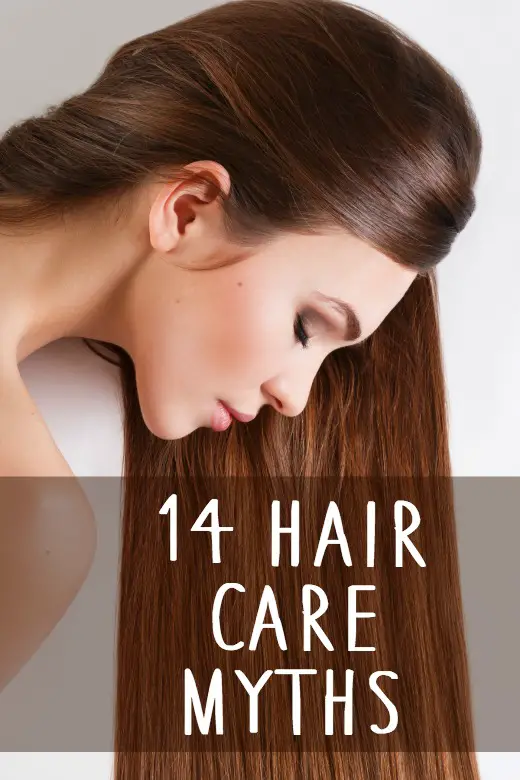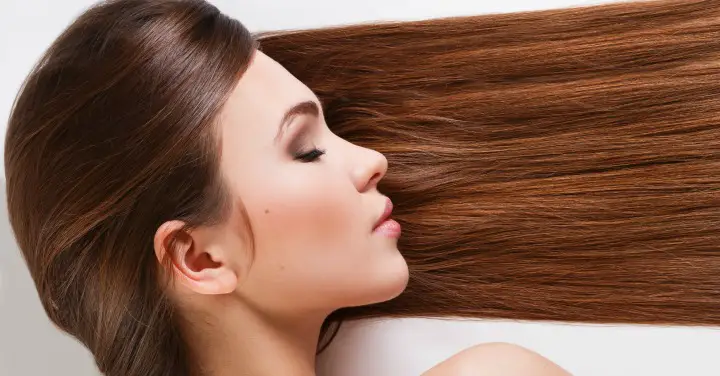14 Hair Care Myths
There are a ton of myths about hair care. After all, we usually never let the truth get in the way of a good legend! In order to sort the facts from the fiction, read on. This article covers some of the most widely known myths about hair care – and the reality behind the myths.
1. Brushing 100 strokes each day will aid in hair growth
FALSE: Brushing your hair that much each day can damage the hair cuticle and this is NOT recommended! Extra brushing will only lead to split ends and hair breakage.
2. Conditioner repairs split ends
FALSE: No conditioner can “repair” damaged hair. What it can do, however, is smooth down the cuticle and make hair seem in better condition. A good conditioner can also prevent damage from occurring.
 3. Blow-drying results in hair loss
3. Blow-drying results in hair loss
FALSE: Blow-drying can damage, burn or dry hair, which can cause it to fall out or become less healthy-looking, but the hair will grow back immediately. This is not permanent hair loss.
4. Smoking does not cause gray hair
FALSE: According to J. G. Mosley of the Leigh Infirmary in Lancashire, England in an article in Science News (January 11, 1997) smokers are four times more likely to have gray hair than non-smokers. Even worse, smoking has been conclusively linked to accelerated hair loss.
5. Sleeping with wet hair causes scalp fungus
FALSE: Scalp or fungal diseases can’t be caught from sleeping with wet scalps. Scalp infections require prior involvement with infected sources such as humans, tainted hair care tools or animals.
6. Color treatment causes hair loss
FALSE: Most hair coloring products contain chemicals that can do serious harm to the hair itself if not properly used, but it won’t instigate hair loss on its own.
7. Sharing combs and brushes cannot spread scalp diseases
FALSE: Lice and other parasites can be transported from scalp to scalp through the sharing of combs, brushes and other hair care tools.
8. Cutting hair makes it grow faster and/or thicker
FALSE: This common misconception comes from the fact that hair is thicker at the base than it is at the tip, so shorter hair appears thicker at first. Cutting your hair does not affect its normal biologically determined growth rate or overall texture. Hair will never ever grow thicker or faster in response to a haircut.
9. More shampoo means cleaner hair
FALSE: Don’t waste your shampoo! A dollop of shampoo, about the size of a quarter is usually enough for long hair. Very long hair may take a little more.
10. Wearing tight braids, ponytails or buns does not cause baldness
FALSE: Traction alopecia is a very real hair loss condition that is quite common amongst older African American women. It results from wearing tight ponytails, cornrows or buns over an extended period of time. Over time, hair breakage or loss as the result of tight, stressed styles, can become permanent. Avoid this potential problem by opting for looser styles that minimize scalp tension.
11. Salon products are identical to drugstore products
FALSE: Although there are exceptions, salon products generally contain higher quality, more expensive ingredients that are designed to consistently provide more intensive cleansing, moisturizing and conditioning results. Many of these ingredients are not found in salon products are not usually found in drugstore brands.
12. Excessive washing of hair causes hair loss
FALSE: Frequency of washing doesn’t harm hair or cause hair loss. Wash it as often as you like, although the typical recommendation is three times a week.
13. Stress does not cause hair loss
FALSE: Severe stress can shut down hair production, causing temporary hair loss. The scalp usually recuperates and hair grows back
14. Diet is not related to hair health
FALSE: It is important to eat right in order to be generally healthy and this includes your hair. Eat nutrient dense foods including plenty of vegetables and fats. Note, however, that no individual food has been proven to be beneficial or detrimental to hair.
